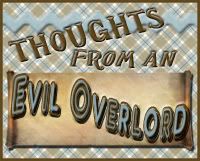I have finished my book club's latest choice, The Devil in the White City, written by Erik Larson. This was not the usual tome where I seat myself in a secluded place, turn off the phones, and read it straight through. Rather, this was a novel that I had to read in chunks, not because I didn't like it, but because there was so much information to absorb. Larson's account was well researched, although he admitted in the footnotes section that he had made up a couple of parts (more about that later). However, he did add that the parts he made up were based on his research.
This book takes place during the World Columbian Exhibition of 1893, which took place in Chicago. At the time, Chicago was desperate for American recognition, and wanted to give the nation, and the world, a memorable occasion, a chance to shine. Back then Chicago did not have a very good reputation, so city officials worked hard to secure the chance at the World Columbian Exhibition (more commonly known these days as the World's Fair), to celebrate the 400th anniversary of Columbus's discovery of America.
Chicago city officials hired a young architect named Daniel Burnham to head the design of the buildings for the fair. Burnham could not design all of the buildings himself, so he hired the best architects he knew to help him. He also hired noted landscape architect Frederick Law Olmstead to help design the fairgrounds. (Olmstead is today noted for his design of Central Park and the grounds of the Biltmore Estate).
Much of this book portrays the struggles and achievements of getting the buildings designed, constructed, and open to the public. It describes how Burnham wanted this to be his masterpiece, and how organizers wanted this fair to be greater than the Paris Exhibition of 1889--greater in attendance, beauty, and memories. Additionally, Larson devotes much of his manuscript to the personal and professional conflicts among the architects themselves, particularly between Burnham and Olmstead. He especially describes Olmstead's health woes in great detail.
But Larson keeps emphasizing that Chicago fair officials wanted the fair to top the one held in Paris. The 1889 Paris Exhibition was remembered for a certain tower that Gustave Eiffel designed, and how it was rather disliked at first, but as the years progressed, became France's top cultural symbol. Chicago fair organizers kept looking for something to "out-Eiffel Eiffel," and after many tries, they finally got their wish, thanks to a man named George Washington Gale Ferris. Mr. Ferris invented something that many amusement parks and carnivals are never without. Yes, the World Columbian Exhibition of 1893 marked the world's first appearance of the Ferris wheel.
Yet amongst the frivolity of the fair, across town, there was a man named H.H. Holmes who ran a business called the World's Fair Hotel. Many of his clients, young, single women, checked into the hotel to visit the fair, but never checked out. Holmes promised many women gifts, trips to Europe, and riches galore--but these women never lived to see them. He bought furniture and goods on credit, and had many creditors at him to pay up.
You see, H.H. Holmes was a very smooth criminal, a murderer and a con artist. He was, as Larson put it, a psychopath before the term even existed. Families hired detectives and lawyers after their daughters went missing, and Holmes tried to snub any leads they may have had. The city of Chicago never persecuted him for his financial crimes, nor did they launch any investigations of him when young girls went missing.
How did the city not persecute Holmes for his crimes? How was he able to get away with it?
Larson creates an interesting juxtaposition between two men perfecting their craft--one who constructed a marvelous World's Fair, and the other who perfected his career manipulating others. He uses the World's Fair as a vehicle for linking the two men, but I kept waiting for a part where they would actually meet. I kept waiting for a climatic point, such as an article in the Chicago Tribune about a big murder spree a la Jack the Ripper, but it never materialized. Rather, Holmes went about his killing sprees so quietly that Chicago police wasn't alerted to anything immediately.
Larson does an excellent job recreating the economic conditions of the time--failing banks, railroads, unemployment--and describes how the fair was seen by many to be a welcome diversion of the times. He also describes how such economic conditions affected attendance at the fair, as well as the organizers' attempts to pay off bank debts and have the fair gain a profit.
The one thing missing from this book, however, is almost obvious: the architecture. Larson's descriptions of the buildings do not do it justice. There is a map of the fairgrounds in the opening pages of the book, and a picture of the Government Building adorns the cover. There are several illustrations scattered throughout the book, but no clear photo plates of the buildings themselves. Larson keeps describing how much people were entranced by the White City, but we never really get to fully understand why. So I Googled "The Devil in the White City" and, via Wikipedia, found this link. One look at the photographs will show you why people were entranced with the White City. The architecture is stunningly, amazingly beautiful. It's like you're stepping into someone's palace, someone's private kingdom, it's that gorgeous.
As for the parts that Larson made up, well, he recreated two murder scenes based on research that he performed. Holmes did not murder his victims by stabbing them, but rather, used chloroform or gas to slowly poison them.
One final note: at the beginning of his book, Larson makes it clear that The Devil in the White City is not a work of fiction. When I read this forward I had to question why he would write such a thing. As I continued to read, particularly the parts involving Holmes, I understood. Some of Holmes's actions are so bizarre they sometimes read as if they come from a really sensational soap opera. But, as Larson emphasizes, it is a true story, and the events actually happened.
This was an excellent read. Now I need to read something a bit more pleasant, to get the murder off my mind.
Thursday, June 26, 2008
Subscribe to:
Post Comments (Atom)


































No comments:
Post a Comment